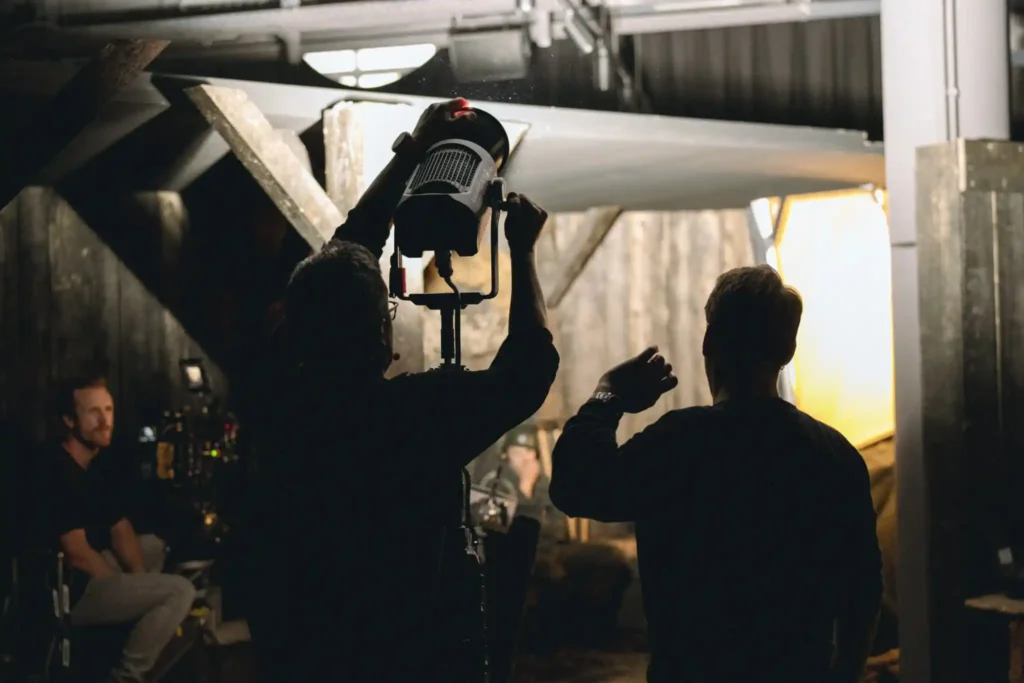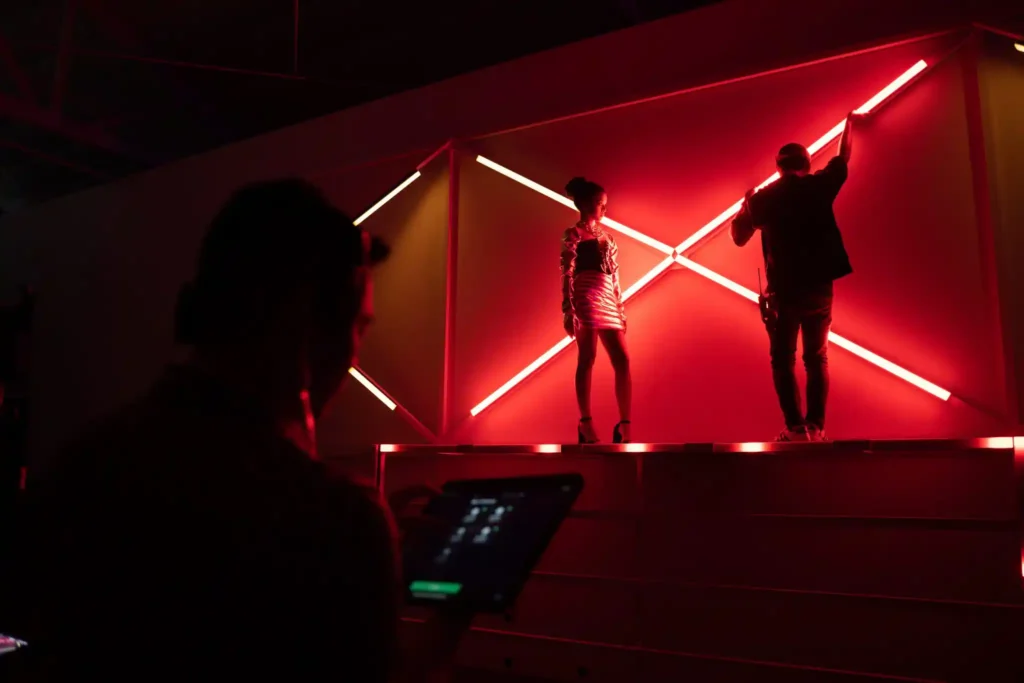The role of a Gaffer explained: what the Chief Lighting Technician does, skills, duties and smart budgeting tips.
A Gaffer, also called the Chief Lighting Technician, leads the lighting department and turns the Director of Photography’s plan into safe, workable setups on set and on location. They translate creative notes into lighting diagrams, manage the team of electricians, plan power, and keep the whole unit safe and efficient. ScreenSkills describes the Gaffer as the person who plans the lighting for each location, runs the lighting crew, and carries responsibility for electrical safety as well as the health and safety of the department.
At Crew Studio we work with a range of experienced UK Gaffers, best boys and sparks for film, television and commercials, and can package lighting, grip and power to suit your scale.

UK shoots often rely on temporary electrical systems. BS 7671 is the Wiring Regulations and sets core safety requirements, while BS 7909 applies specifically to entertainment and similar events. Together they guide earthing choices, protection, inspection and paperwork. Local authority filming guidance frequently expects BS 7909 compliance for significant temporary power. A Gaffer who understands both standards reduces risk and keeps insurers and councils comfortable.
Practical example. Generator supplied systems should follow BS 7671 Section 551 and use suitable earthing and protective devices. On some sites a TT arrangement with dedicated earth electrodes is appropriate where a TN supply is unavailable. Choices are driven by the supply, structure and environment.
CRI alone does not tell the full story. Broadcasters and many camera teams use TLCI, the EBU’s method that simulates a camera pipeline to score a light for television work. More recently, the Academy’s SSI compares a test light’s spectrum to a chosen reference, which helps when matching LED to tungsten or daylight with fewer surprises. A Gaffer who reads TLCI and SSI alongside creative intent tends to deliver cleaner skin tones and better intercutting.
Many LEDs dim with pulse width modulation. Cameras can see that pulsing even when the eye does not, which shows up as banding or flicker at certain frame rates and shutter angles. Good practice is to check the fixture’s driver behaviour and test at intended frame rates. Manufacturers and engineering bodies note that driver design and PWM frequency are the key variables. A cautious Gaffer confirms settings on the day rather than trusting spec sheets.
In unscripted television, the Lighting Director sets the look. The Gaffer works with that plan, supervises the team of electricians and integrates cameras, generators and rigging in multi camera environments. The role flexes with format, which is useful to know when you are hiring.

Rates depend on sector, scale, hours and responsibility. There is no single fixed fee, so productions usually reference union guidance and commercial terms, then negotiate.
In practice you will agree a day or week for the Gaffer, then separate rates for best boy and sparks, and separate costs for lighting and distro packages. Clarify prep, rig and de-rig days, generator hire, fuel, overtime triggers and travel. Put everything in a clear deal memo at the start and you will avoid surprises later.
A skilled Gaffer is both creative and meticulous. They protect image quality, keep people safe and help the schedule move. If you are planning a shoot in the UK and want lighting that is beautiful and compliant, Crew Studio can help you hire a Gaffer, best boy and sparks, and can package lighting, grip and power for your production.
Join The Crew. We’ll only send you exciting emails.